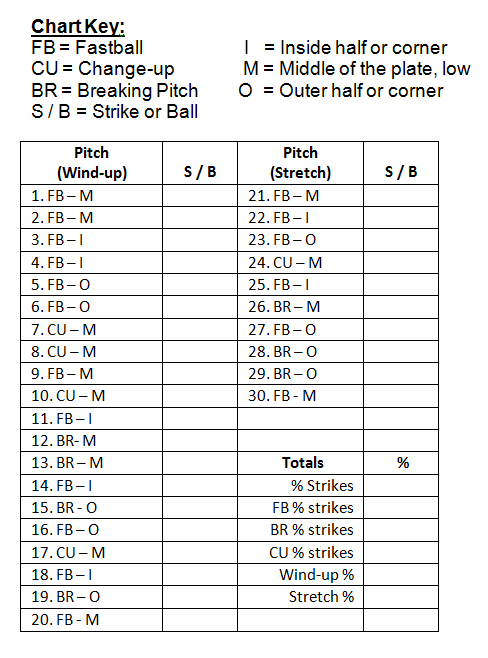|
By: Bob McCreary - Baseball by the Yard Part 1 Going into his fifth start of this 2011 season, Cincinnati Reds pitcher Edinson Volquez had a 1st inning ERA of 29.25. Prior to his latest start, the announcers talked quite a bit about what causes pitchers to have so much difficulty in the first inning. They also mentioned that the pitching coach had been working with him on some adjustments to his pre-game routine both physically and mentally. This problem with Volquez is actually more common among starting pitchers than a lot of fans realize. This phenomena is especially true at the high school level mainly because many pitchers do not warm up properly. There are a couple times during the course of a game when pitchers are at their most vulnerable. The first inning is usually at the top of that list. However, with a few adjustments and a little more focus during their pre-game routines, many pitchers can eliminate or at least minimize the vulnerability that comes with not being fully prepared to pitch. Unfortunately, many losses occur because of what happens in the first couple innings of games. Below is a pre-game schedule for a starting pitcher in a game that starts at 3:45pm (our start times). A pitcher certainly can adjust the times to fit any game time if needed. Below the schedule are some additional thoughts on the process. 3:05 - 3:15
3:15 – 3:25
3:25 – 3:40
3:40 - 3:45
Pre-Game Routine Notes:
Part 2 In the previous Pre-game routine (Part 1) [above], I provided a pre-game schedule for starting pitchers. The timing involved allows pitchers to properly prepare to avoid having a sluggish start to the first inning. Today, I provide a suggested pitch-by-pitch routine when pitchers are actually on the bullpen mound practicing their pitches. This too can be tweaked to fit the needs of individual pitchers. Below the chart are some additional explanations of things that appear in the chart.
Additional Notes:
About the Article...
I am proud to come from a baseball family. My grandfather's (Mother's side) name was Hal Kelleher. He pitched for the Philadelphia Phillies in the 1930's. My father was a long time baseball coach at the youth, high school, and college levels. He even had a chance to coach in the College World Series while an assistant at Temple University in 1972. While in the military service, my father was stationed at Fort McPherson outside of Atlanta, Georgia which had a general that was a baseball fanatic. He did everything he could to bring major league players who were drafted into the Army to Fort McPherson. As a result, Fort McPherson was stacked and won the All-Army Championship as a result. My father played second base on that team. Being around those major leaguers was quite a learning experience for my Dad. He learned about the mental toughness of major leaguers and all the finer points that made them tremendous players. Because of all this, from the time I picked up a baseball, I was learning the finer points of the game. Many of the things I was learning at a young age are not generally taught to players until they get into the higher levels. I was very fortunate to have those good baseball people close to me. When I finished my playing career, I decided I wanted to pass on these finer points to as many players, coaches, and parents as I could. My coaching, this website, and especially my blog are all an attempt to do that. I hope you enjoy what I have to offer. If you are a player or coach, I hope that something you learn from me gives you a better chance at playing and/or coaching at the levels I have been fortunate to experience. Best of luck to all of you on your baseball journey! Bob McCreary |







